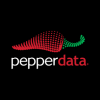How DevOps Can Reduce the Runaway Waste and Cost of Autoscaling
Autoscaling is the process of automatically increasing or decreasing the computational resources delivered to a cloud workload based on need. This typically means adding or reducing active servers (instances) that are leveraged against your workload within an infrastructure.
Learn why Enterprise clients use Pepperdata products and Services: https://www.pepperdata.com/
#autoscaling #managedautoscaling #bigdataperformancemanagement
The promise of autoscaling is that workloads should get exactly the cloud computational resources they require at any given time, and you only pay for the server resources you need when you need them. Autoscaling provides the elasticity that customers require for their big data workloads, but it can also lead to exorbitant runaway waste and cost.
Pepperdata provides automated deployment options that can be seamlessly added to your Amazon EMR, Google Dataproc, and Qubole environments to recapture waste and reduce cost. Join us for this webinar where we will discuss how DevOps can use managed autoscaling to be even more efficient in the cloud. Topics include:
– Types of scaling
– What does autoscaling do well? When should you be using it?
– Is traditional autoscaling limiting your big data success?
– What is missing? Why is this problem important?
– Managed cloud autoscaling with Pepperdata Capacity Optimizer
More on the episode:
The topic of the webinar today is, as you see on screen, Reducing the Runaway Cost of Autoscaling. And I'll skip forward here to text about the topic. You can read this, but essentially what we're talking about is the process of scaling computational resources in the cloud in response to demand.
This can be planned. This can be literally on demand when you get workloads and the time that you spend deploying resources is completely different than when you have an on-prem environment and you have a cloud environment.
And that is, in fact, the allure of these online environments. Whether you're looking at, you know, EMR data proc or Cue ball there's a prevalence these days to if not move to the cloud, at least be looking at the cloud. Which is, you know, probably why a bunch of you are here.
And the expectation is oftentimes different than what you get. So, we as a performance company have run into the challenge of not only helping people understand their costs in the cloud and their resource utilization in the cloud but also optimizing that utilization, and autoscaling is a key component of that.
So, you know the autoscaling customer requires the cut, the customer requires disaster elasticity. And one of the challenges is yes, you can scale an environment, you know, with, you know, on a win really with, you know, the run of a simple command.
But, are you getting the most for your money when you do that? And is the workload actually corresponding to the deployment curve and the resources that you're actually leveraging in these cloud environments? So, that'll be the topic today, you know, what are we seeing in terms of the autoscaling efficiency.
And then, how do you get better at it essentially. So, we'll have our introduction which we're right in the middle of. I'll talk about the types of autoscaling that we're seeing. It's not all the same. It's not one size fits all out there.
And then, the advantages and then when you should be looking to use autoscaling. And then, we'll talk about those challenges and, you know, how to get over those humps. And then, we'll summarize things. We'll do some Q & A. So when we talk about the types of autoscaling, you know, each of these cloud environments has the ability to deploy server instances, and compute resources, and memory and network on-demand, and respond to workloads that are being run. So, there are a couple of types of clusters that we're seeing being deployed.
They are fully ephemeral versus based. And what that means is a fully ephemeral cluster terminates and all of the nodes go down when the workload is done. All the configuration details, software, policy frameworks, all of that are encompassed in the bootstrap actions and the startup automation. So, each time you launch a cluster, it's completely new...
Learn why Enterprise clients use Pepperdata products and Services: https://www.pepperdata.com/
Check out our blog: https://www.pepperdata.com/blog/
/////////////////////////////////////////////////////////////////////////////////////////
Connect with us:
Visit Pepperdata Website: https://www.pepperdata.com/
Follow Pepperdata on LinkedIn: https://www.linkedin.com/company/pepperdata
Follow Pepperdata on Twitter: https://twitter.com/pepperdata
Like Pepperdata on Facebook: https://www.facebook.com/pepperdata/

